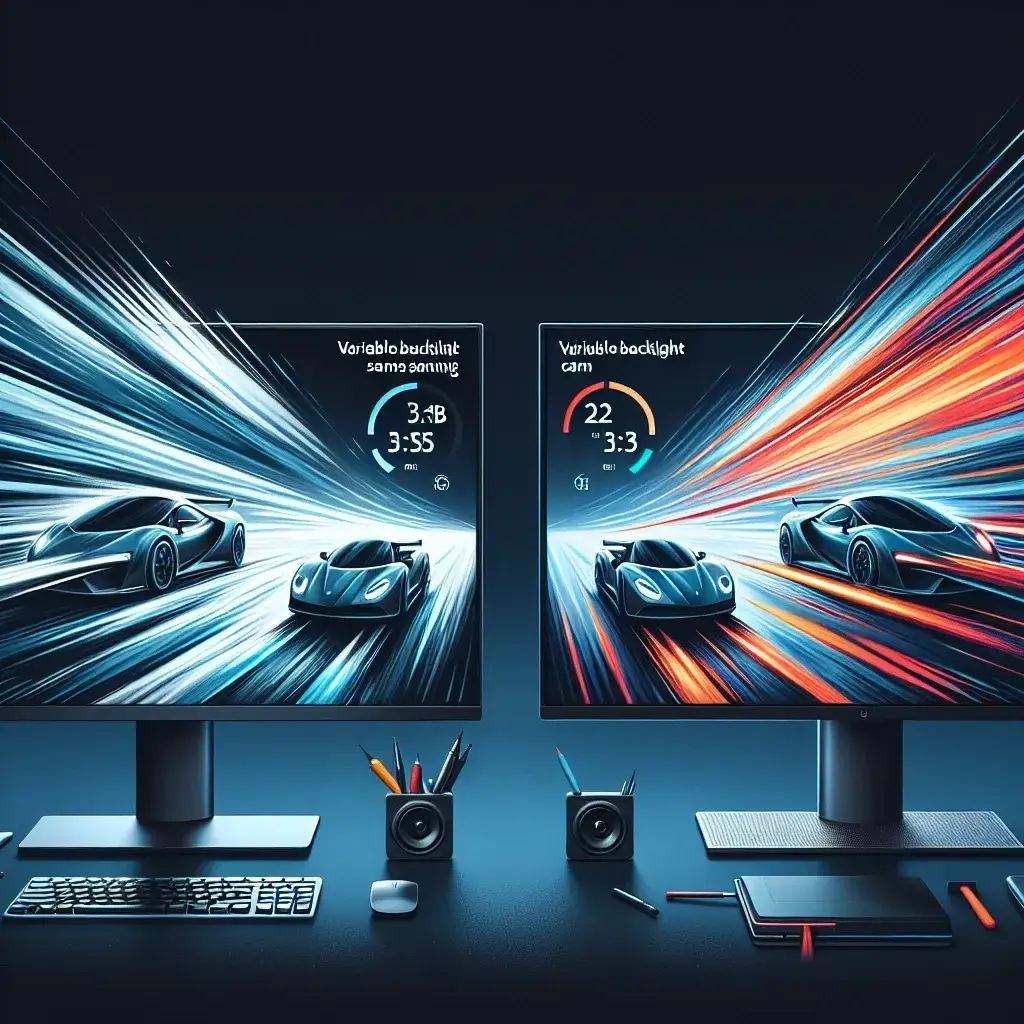With the ever-increasing demand for high-definition displays, one crucial factor that affects the viewing experience is motion blur. Whether you’re a gamer, a video editor, or just someone who enjoys watching movies, motion blur can significantly impact how you perceive moving images on your screen. One technology that has been developed to combat this issue is variable backlight scanning. But how exactly does this technology work, and how does it help reduce motion blur? Let’s dive into the details.
Understanding Motion Blur
Before diving into variable backlight scanning, it is important to understand what causes motion blur. Essentially, motion blur occurs when an image being displayed moves faster than the refresh rate of the monitor. This causes the image to blur because the pixels can’t change colors fast enough to keep up with the motion.
| Factor | Description |
|---|---|
| Refresh Rate | The number of times per second that a monitor updates the image on the screen. |
| Pixel Response Time | The amount of time it takes for a pixel to change from one color to another. |
| Frame Rate | The number of frames displayed per second in the content being viewed. |
How Variable Backlight Scanning Works
Variable backlight scanning is a technique that reduces motion blur by turning different sections of the backlight on and off rapidly. This method takes advantage of the way our eyes and brains process visual information to make the image appear smoother and less blurry. Here’s a step-by-step breakdown of how it works:
- Synchronization with Refresh Rate: The backlight is synchronized with the monitor’s refresh rate. For example, if the monitor is operating at 120Hz, the backlight will scan 120 times per second.
- Dividing the Screen into Zones: The screen is divided into multiple zones, which allows for more precise control of the backlighting in specific areas.
- Rapid On/Off Cycling: Each zone’s backlight is turned on and off very quickly in a sequence that matches the refresh rate. This rapid cycling reduces the perceived blur because our eyes are not able to track the changes fast enough to see the transition periods.
Benefits of Variable Backlight Scanning
Variable backlight scanning offers several benefits that enhance the quality of the display, particularly for fast-paced content. Some of the main advantages include:
Reduced Motion Blur
The primary benefit of variable backlight scanning is the significant reduction of motion blur. This is especially beneficial for gaming and fast-paced video content, where clear image quality is crucial.
Improved Visual Quality
By reducing motion blur, the overall visual quality of the display is enhanced. This is not only beneficial for gamers but also for professionals who work with video and animated content.
Better Gaming Experience
For gamers, reduced motion blur can make a significant difference in how a game is experienced. Faster response time and clear images can provide a competitive edge in fast-paced games.
How Variable Backlight Scanning Compares to Other Technologies
There are various technologies aimed at reducing motion blur, each with its own pros and cons. Here’s a quick comparison of some common methods:
| Technology | Advantages | Disadvantages |
|---|---|---|
| Variable Backlight Scanning | Reduces motion blur effectively without significantly impacting brightness or color accuracy. | Complex implementation can increase costs. |
| Low Motion Blur (LBM) Settings | Reduces motion blur by increasing pixel response time speed. | May result in lower brightness and potential flickering. |
| Motion Interpolation | Increases the frame rate of video content to make motion appear smoother. | Can cause artifacts and input lag. |
Conclusion
Variable backlight scanning is a powerful technology that effectively reduces motion blur, thereby enhancing the quality of the viewing experience. Whether you’re gaming, watching movies, or working with video content, this technology plays a significant role in delivering clear and smooth images. Understanding how variable backlight scanning works and its benefits can help you make an informed decision when choosing a new monitor, ensuring that you have the best possible display for your needs.

